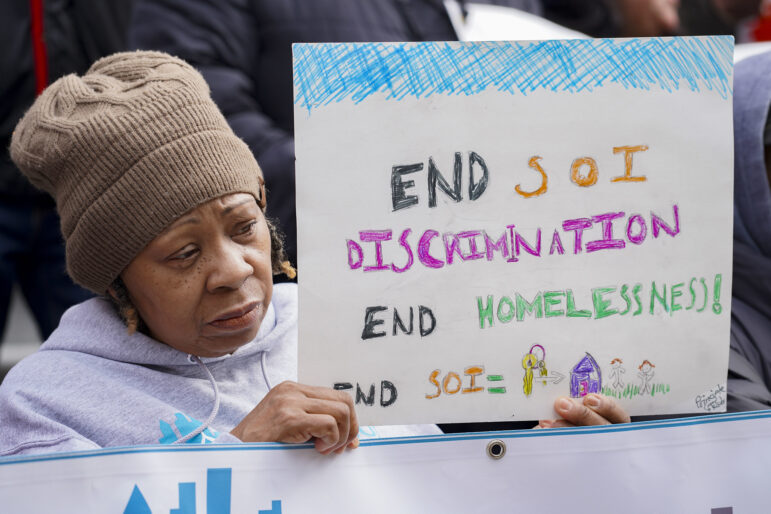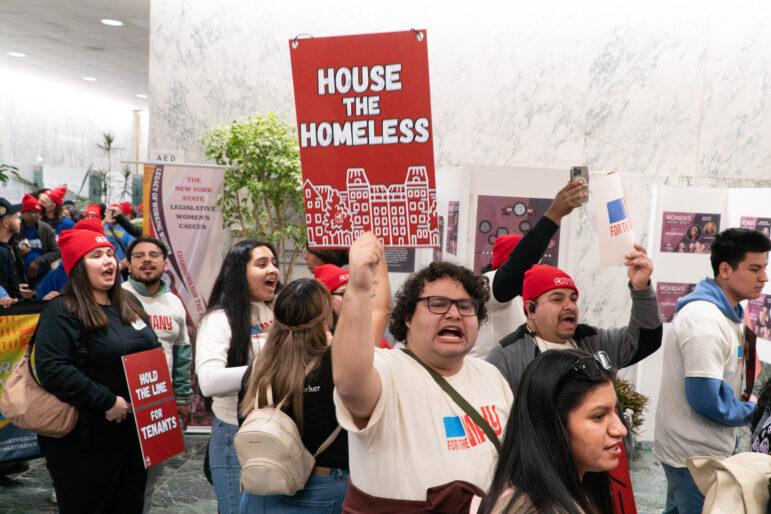On Dec. 20, City Council will vote on an issue that’s been debated in housing circles for much of 2006: updating a 1971 amendment, via section 421, to Chapter 1207 of the state real property tax law. Councilmembers are presently negotiating to try to close the wide gap between supporters of Speaker Christine Quinn’s bill and of a competing bill sponsored by Councilmember Annabel Palma. “421-a,” as it is called, sunsets at the end of 2007, so the Council must pass its changes by the end of this year to give the state legislature time to enact (or not) the city’s new version of this mechanism for encouraging contruction of both below-market and market-rate housing.
Last week, Mayor Bloomberg went to the Queens Museum of Art to announce a breathtakingly bold initiative to prepare New York’s infrastructure for the next 20 years – as well as its next million people. The mayor envisioned massive investments in transportation, water, waste disposal, park land and housing, proposing close to $20 billion in vital capital spending in just one sentence of the speech. To anyone who loves this city, the mayor’s plan was exciting in its scope and its vision.
But something about the speech was profoundly off-key. With tens of thousands of apartments leaving rent regulation for the free market every year, thousands of Section 8 vouchers being taken out of circulation by the federal government and the removal of dozens of Mitchell-Lama and project-based Section 8 buildings from affordable housing restrictions every day, there was one unanswered question in the mayor’s speech: Just who exactly will be able to afford to live in New York City in 2030?
Ironically, on the same day the mayor was speaking in Queens, the National Low Income Housing Coalition released a new report finding that a typical New Yorker needed to earn more then $20 per hour working full time, 52 weeks a year in order to pay rent on the average two-bedroom apartment in this city. While living in New York has always been expensive, the explosion in the cost of housing and the loss of tens of thousands of once-affordable units in solidly working-class neighborhoods threatens to price an entire generation of low-income and middle-class families out of the city before any of the mayor’s bold new plans come to fruition.
Among working-class New Yorkers, there is an increasing sense that the city Mayor Bloomberg described isn’t for them. On Nov. 30th, the owners of Starrett City in Brooklyn – the largest federally subsidized affordable housing development in America – announced plans to put their 5,881 affordable apartments on the auction block. The sale of Starrett City came two weeks after 11,200 affordable apartments at Stuyvesant Town and Peter Cooper Village in Manhattan were sold to investors bent on transforming a complex built for returning World War II veterans into a village for the wealthy.
New Yorkers know they are getting priced out. What they might be surprised to learn is that a good chunk of their tax bill is going to pay for tax breaks to the same luxury developers and condo buyers that are pricing them out of their communities.
In the 1970s New York City’s 421-a property tax exemption program was created to encourage developers to build new housing in a city that had fallen on hard times. In the 1980s, it was adjusted to help encourage affordable housing. But to this day, developers in some parts of the city still receive a 10 to 15 year “as of right” tax break for any new, market-rate, multifamily development. As a result, exclusively high-end buildings in every corner of the city are receiving large tax exemptions.
This year, the city is giving $400 million in tax breaks through the 421-a program, with most of that going to subsidize luxury development. This fall, a task force appointed by Mayor Bloomberg proposed to adjust the program to require affordable housing in a broader swath of the city in exchange for tax breaks. Speaker Quinn pushed these reforms further, limiting the benefits that buildings outside the expanded exclusion zone can receive to $65,000 of “assessed value” or approximately $107,000 per unit in lifetime tax benefits. These reforms are a step in the right direction.
In every borough, however, in neighborhoods from Riverdale to Flushing and Brighton Beach to East Harlem, the “reformed” 421-a program will continue to subsidize the development of luxury condos. Under the reforms proposed by Bloomberg and Quinn, New York City will continue to take tax dollars from working families in neighborhoods across the city and use that money to subsidize the construction of million-dollar luxury condominiums right across the street. Essentially the plan asks people from rapidly gentrifying low- and middle-income communities to pay to price themselves out of their own community.
That’s why I endorsed a letter last week, from faith leaders to the mayor and council, urging changes more like those in Councilmember Palma’s bill. We ask that 30 percent of units at minimum be affordable to those making 50 percent or less of the area median income, that they remain affordable in perpetuity, and that the program covers the whole city.
Housing affordability is a crisis that requires the type of vision, commitment and action that the mayor described in his speech in Queens. As we consider the future of the 421-a program and how to keep New York affordable for the next generation, we need to ask our elected officials to stand up to special interests in real estate and stop wasting our tax dollars on subsidies for luxury housing. As Mayor Bloomberg said at the end of his speech, challenging his audience to think big: “It is our city. It is our future. It is our choice.”
Rev. Kendall is the Archdeacon for Mission of the Episcopal Diocese of New York and chairs the Housing Committee of the Commission of Religious Leaders of the City of New York.









